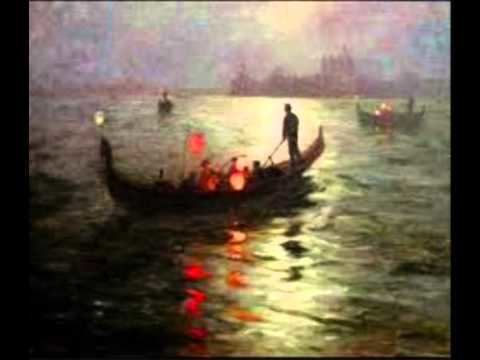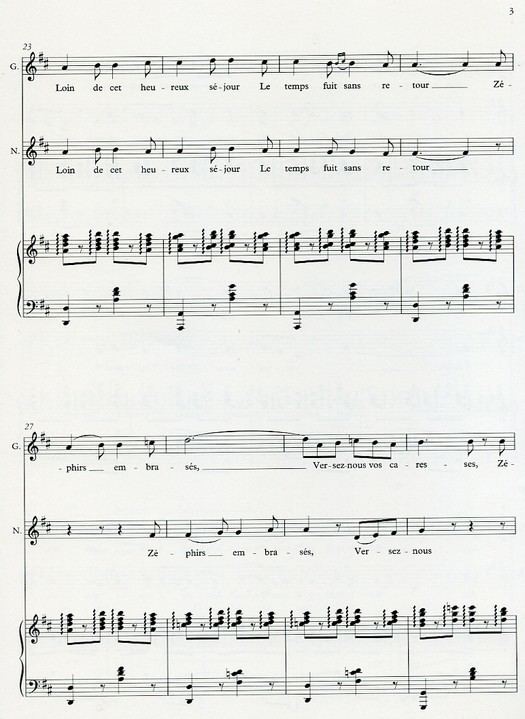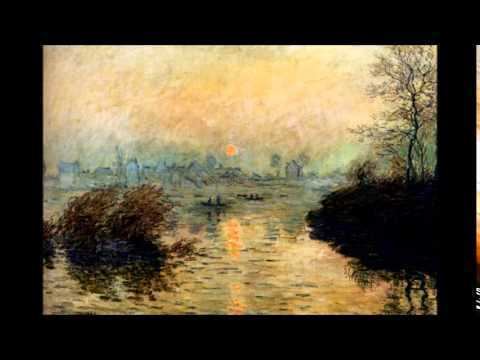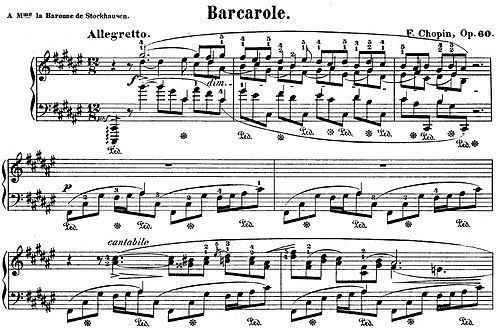 | ||
Offenbach barcarolle from the tales of hoffmann
A barcarolle (from French, also barcarole; originally, Italian barcarola or barcaruola, from barca 'boat') is a traditional folk song sung by Venetian gondoliers, or a piece of music composed in that style. In classical music, two of the most famous barcarolles are Jacques Offenbach's "Belle nuit, ô nuit d'amour", from his opera The Tales of Hoffmann; and Frédéric Chopin's "Barcarolle in F-sharp major" for solo piano.
Contents
- Offenbach barcarolle from the tales of hoffmann
- Rafal blechacz plays chopin barcarolle op 60
- Description
- Notable examples
- References
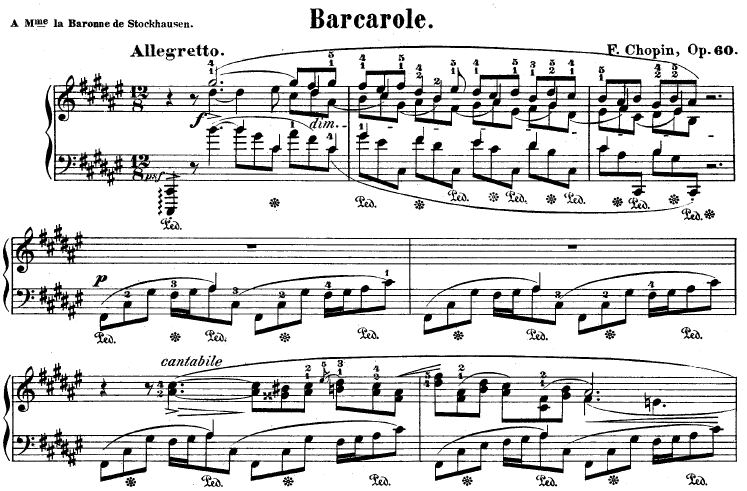
Rafal blechacz plays chopin barcarolle op 60
Description
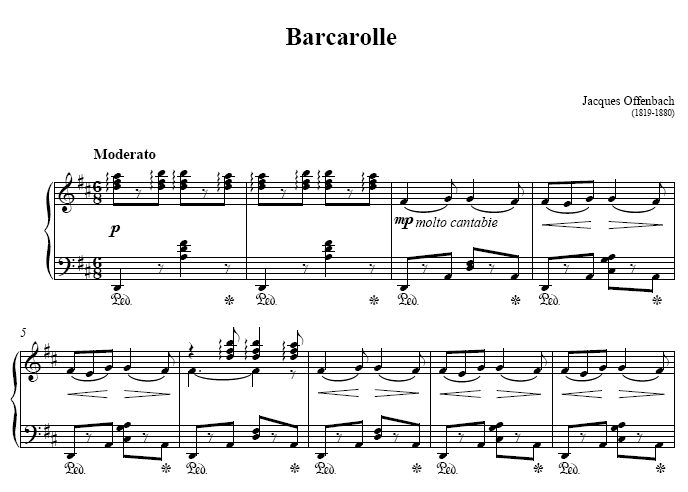
A barcarolle is characterized by a rhythm reminiscent of the gondolier's stroke, almost invariably in 6/8 meter at a moderate tempo.
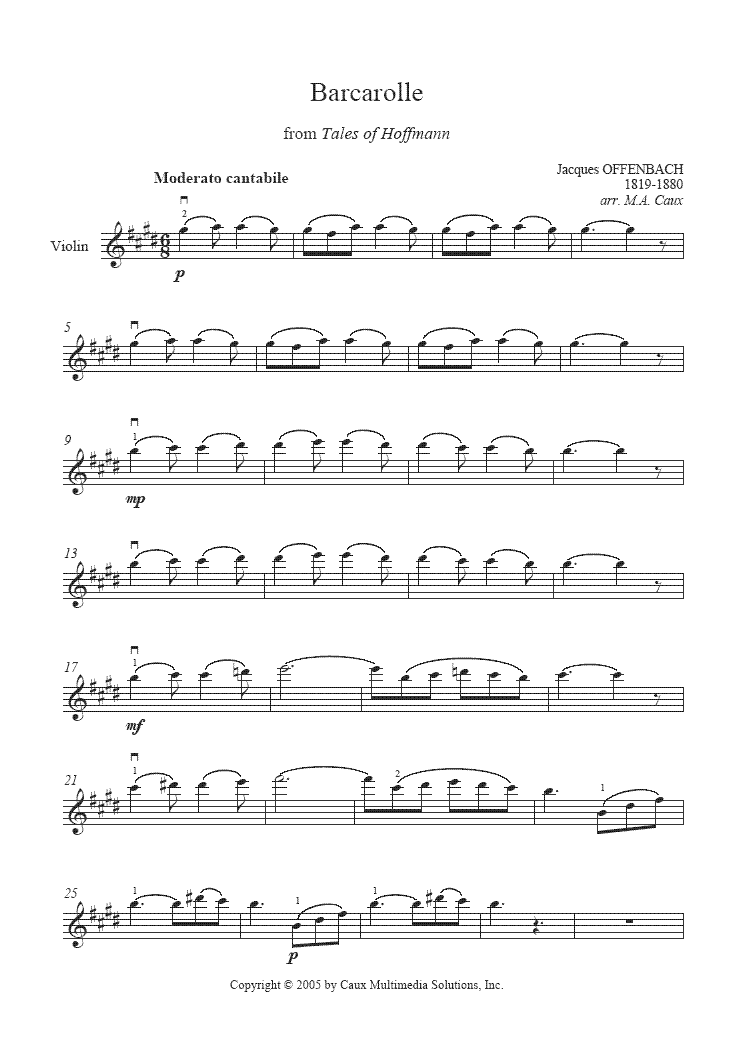
While the most-famous barcarolles are from the Romantic period, the genre was well-enough known in the 18th century for Burney to mention, in The Present State of Music in France and Italy (1771), that it was a celebrated form cherished by "collectors of good taste".
Notable examples
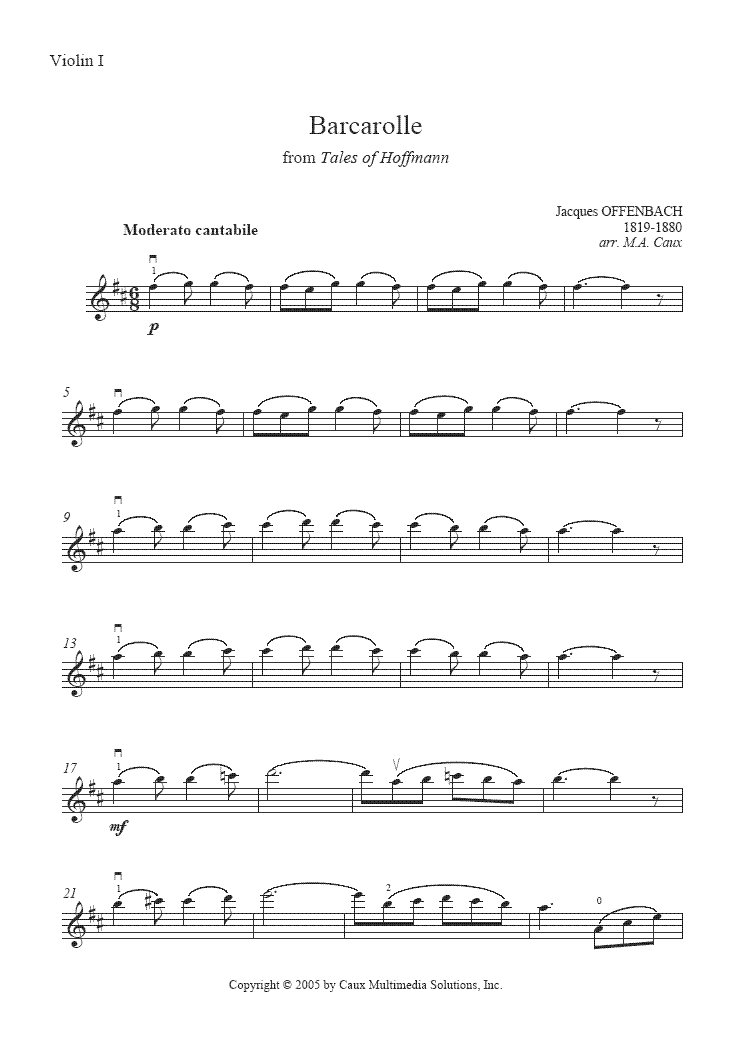
The barcarolle was a popular form in opera, where the apparently artless sentimental style of the folklike song could be put to good use. In addition to the Offenbach example: Paisiello, Weber, and Rossini wrote arias that were barcarolles; Donizetti set the Venetian scene at the opening of Marino Faliero (1835) with a barcarolle for a gondolier and chorus; and Verdi included a barcarolle in Un ballo in maschera (i.e., Richard's atmospheric "Di’ tu se fidele il flutto m’aspetta" in Act I). The traditional Neapolitan barcarolle "Santa Lucia" was published in 1849.
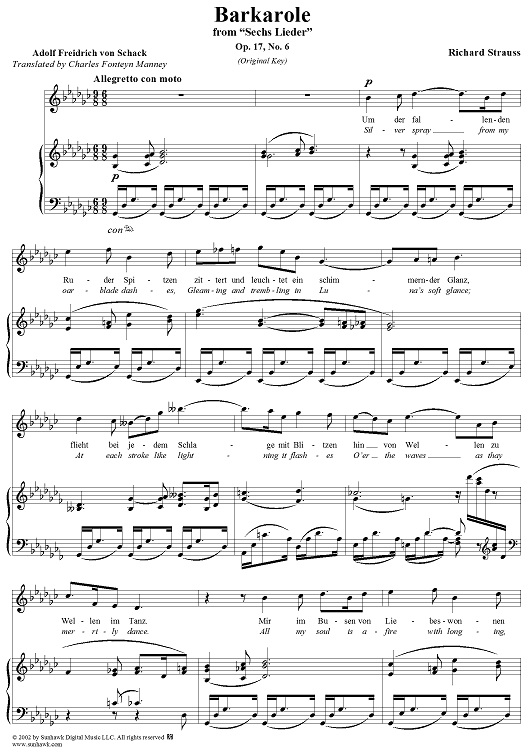
Arthur Sullivan set the entry of Sir Joseph Porter's barge (also bearing his sisters, cousins and aunts) in H.M.S. Pinafore to a barcarolle, as well as the Trio "My well-loved lord and guardian dear" among Phyllis, Earl Tolloller and the Earl of Mountararat in Act I of Iolanthe. Schubert, while not using the name specifically, used a style reminiscent of the barcarolle in some of his most-famous songs, including especially his haunting Auf dem Wasser zu singen ("To be sung on the water"), D.774.
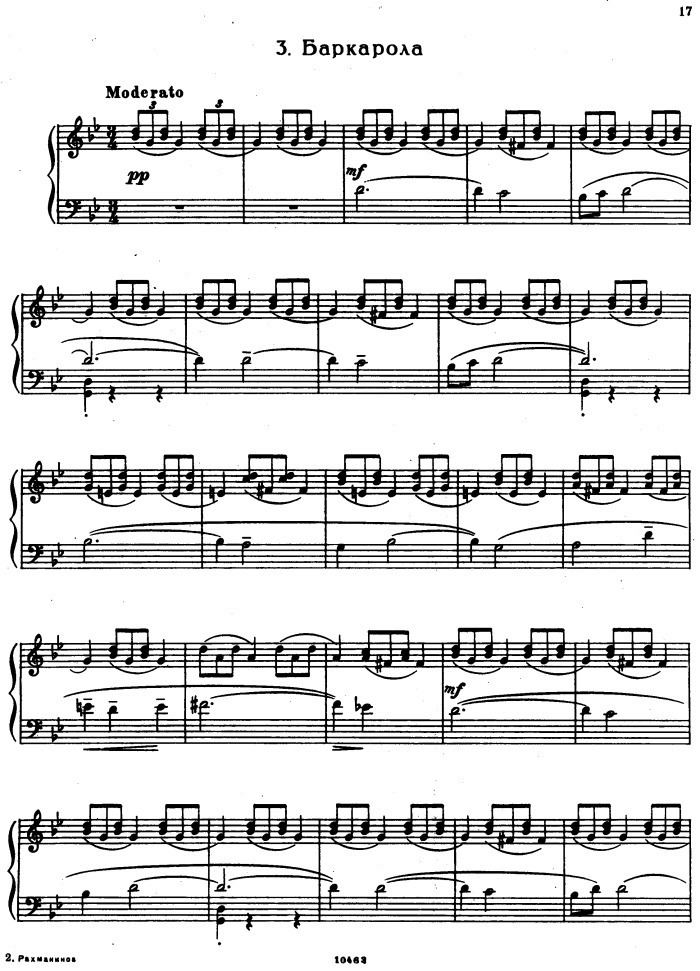
Other notable barcarolles include: the three "Venetian Gondola Songs" from Mendelssohn's Songs without Words, Opp. 19, 30 and 62; the "June" barcarolle from Tchaikovsky's The Seasons; Charles-Valentin Alkan's "Barcarolle" from the Op. 65 Troisième recueil de chants; Béla Bartók's "Barcarolla" from Out of Doors; several examples by Anton Rubinstein, Mily Balakirev, Alexander Glazunov, Edward MacDowell, and Ethelbert Nevin; and a series of thirteen for solo piano by Gabriel Fauré.
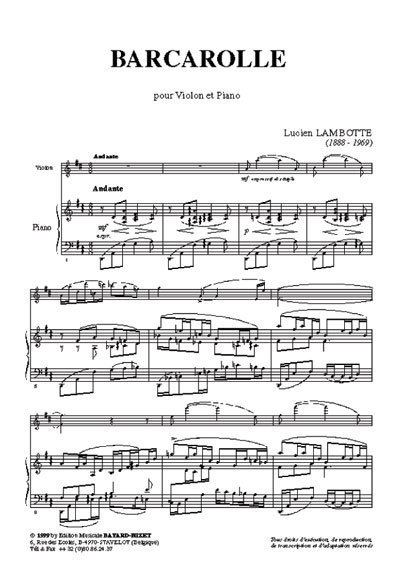
In the 20th century, further examples include: Agustín Barrios's Julia Florida; the second movement of Villa-Lobos's Trio No. 2 (1915) (which contains a Berceuse-Barcarolla); the first movement of Francis Poulenc's Napoli suite for solo piano (1925); George Gershwin's Dance of the Waves (1937, unpublished); Ned Rorem's three Barcarolles for piano, composed in Morocco (1949); the first movement of Nikolai Myaskovsky's Piano Sonata no. 8, op. 83 (1949); "The Kings' Barcarolle" from Leonard Bernstein's Candide (1956); and "Agony" from Stephen Sondheim's Into the Woods.

